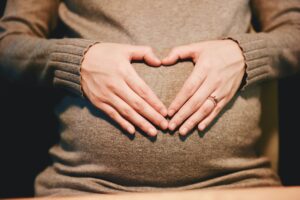The body is changing so much during pregnancy.
An overview of systematic reviews and randomised controlled trials across the whole area of pregnancy found evidence that acupuncture may assist with the management of some complaints, though more studies are needed (Smith 2009). Acupuncture is relatively safe with no records of serious adverse events in the pregnancy-related systematic reviews (Cho 2010; Lim 2009; Vas 2009; Ee 2008).
We frequently see pregnant women who may have the following conditions:
- Nausea and vomiting
- Heartburn
- Constipation
- Itching in pregnancy
- Sinusitis
- Varicose veins
- Anaemia
- Insomnia
- Anxiety and depression
- Thrush and abnormal vaginal discharge
- Urinary tract infections
- Musculoskeletal conditions
- Fatigue and exhaustion
- Oedema
- Small for dates babies (intra-uterine growth retardation-IUGR)
- Pregnancy-induced hypertension
Early Pregnancy
Regular treatment with acupuncture designed to reduce anxiety offers a woman important and reassuring support during the first few weeks of pregnancy. Clinical trials have shown that regular monitoring and reassurance reduces miscarriage rates (Domar A et al Fertil Steril 2009, Smith C and De Lacey S, in press, FSA conference
2008). Acupuncture has been demonstrated to have significant immune-modulating effects. This effect may be important in reducing the risk of rejection by the mother’s immune system in the early days as an embryo implants and a pregnancy is established. Acupuncture can be used to enhance microcirculation in the uterine
lining and the newly developing placenta. This may have particular importance where a woman has a tendency to produce clotting factors.
Acupuncture for Breech Presentation
Acupuncture treatment is ideally administered at 34-36 weeks gestation. This generally involves the woman coming to the clinic for just one appointment and being shown how to continue treatment at home with a moxa roll. This is a herb which is compacted into a cigar-shaped stick and burnt by the side of an acupuncture point. Moxibustion is the burning of moxa, the Chinese name for the herb mugwort, well known for its deep heat-giving properties. This alters the flow of energy to the uterus and fetus when applied to a certain acupuncture point, encouraging the baby to turn. Moxibustion is practised routinely in China on all breech presentations. It increases fetal activity, usually enough to turn the fetus from breech to cephalic presentation. Studies conducted in China report varying success rates at 81% (Wei Wen, Co-operative Research Group on Moxibustion Version, 1984), while in more recent Italian studies 75% of the babies in the moxibustion group turned. (Cardini, Journal of American Medical Association, 1998).
Acupuncture for the onset of labour
Acupuncture treatments can be administered once the woman reaches 40 weeks gestation to encourage the labour to start. Points used are ones that are known to stimulate the uterus, stimulate contractions and encourage the cervix to dilate. You can have 3 or 4 treatments or you can have just one treatment. However, treatments do tend to have an accumulative effect (i.e. the more treatments you have, the more effective they are). If you just want to have one treatment, have it ideally 24-48 hours before you are booked for a medical induction treatment.
From auditing the treatments we have administered, we found that from 41 weeks of gestation, approximately 45% of women went into labour within 24 hours.
Pre-Birth Treatments
These weekly treatments are normally given for the 3 consecutive weeks before full-term. Research suggests that these consistently show to:
- Reduce the average length of time in labour.
- Contribute to reduced intervention in labour, including the need for medical induction and caesarean.
- Increase the chances of women experiencing a natural efficient labour.
- Encourage women to go into spontaneous labour around their due date. (Source: Journal of Chinese Medicine, Oct 2004.)
Childbirth
In early/pre-labour
Acupuncture can be used to help establish & regulate contractions. It can be used if
your waters have broken to try and bring labour on.
During established labour
- to keep contractions regular
- to make contractions effective(ie dilate cervix)
- to keep the mother calm
- to give mother strength and energy
- to help manage labour pains
Second Stage
- to encourage the baby down the birth canal
- stimulate contractions to promote the delivery of the placenta
- promotes cessation of excessive bleeding
Systematic reviews of randomised and quasi-randomised controlled trials suggest that acupuncture may help to relieve pain during labour (Cho 2010; Smith 2006). The later review found that acupuncture was superior to conventional analgesia but not, or marginally, better than minimal (sham) acupuncture. Given that ‘sham’ acupuncture interventions are not inert placebos the effect of ‘real’ acupuncture may be under-estimated in such trials, and non-superiority should not be taken at face value (Lundeberg 2009). Since that review was compiled there have been further trials supporting the efficacy of electroacupuncture (Ma WZ 2010), moxibustion (Ma
SX 2010) and acupressure (Hjelmstedt 2010). Acupuncture can be used in conjunction with conventional methods of pain relief and can complement their effectiveness.



